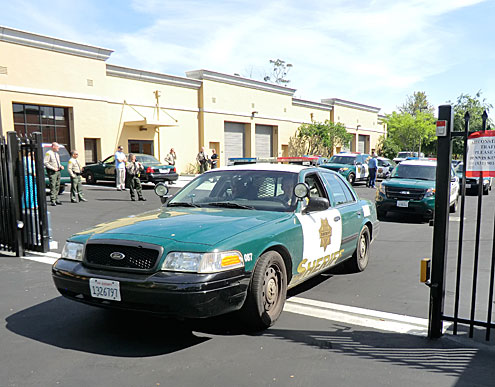By Zach Friend, Santa Cruz County Supervisor 2nd Distict
 This year the Sheriff’s Office became the first agency in California to adopt recommendations from the President’s Task Force on 21st Century Policing, which provide solutions to help law enforcement and communities strengthen trust and collaboration. Sheriff Hart established a local task force (which includes twenty community members) to review and implement the President’s recommendations. The recommendations focus on six key pillars of policing that ensure the Sheriff’s Office policing model reflects the values of our community.
This year the Sheriff’s Office became the first agency in California to adopt recommendations from the President’s Task Force on 21st Century Policing, which provide solutions to help law enforcement and communities strengthen trust and collaboration. Sheriff Hart established a local task force (which includes twenty community members) to review and implement the President’s recommendations. The recommendations focus on six key pillars of policing that ensure the Sheriff’s Office policing model reflects the values of our community.
Here are the six pillars and some of the recommendations that have already been implemented.
- Pillar 1: Building Trust and Legitimacy: Transferring a philosophy from warrior to guardian and ensuring trust between police and citizens is a foundational principle of this program.
- Pillar 2: Policy and Oversight: As Sheriff Hart has noted, police policies must reflect community values. This pillar notes that law enforcement should collaborate with community members, especially in communities and neighborhoods disproportionately affected by crime, to develop their policies and strategies.
- Pillar 3: Technology and Social Media: The use of technology can improve policing practices and build community trust but it must be built on a defined policy framework to ensure transparency, accountability and privacy.
- Pillar 4: Community Policing and Crime Reduction: Community policing emphasizes working with neighborhoods for improved public safety. The Sheriff’s Office will work with residents to identify problems and collaborate on implementing solutions that produce meaningful results.
- Pillar 5: Training and Education: Today’s officers must be trained and capable to address a wide variety of socio-economic challenges.
- Pillar 6: Officer Wellness and Safety: The wellness and safety of law enforcement officers is critical not only for the officers, their colleagues, and their agencies but also to public safety. The Sheriff’s Office, as part of this plan, is working on a set of recommendations to improve officer wellness and safety.
The above six pillars are the guiding principles for the local Task Force. The Sheriff has challenged this group to institute these changes throughout the department. To that end, here are examples of just some of the many recommendations that have been completed that reflect those principles:
- Law enforcement culture should embrace a guardian mindset to build public trust and legitimacy and adopt procedural justice as the guiding principle for policies and community interactions.
- Law enforcement agencies should acknowledge the role of policing in past and present injustice and discrimination and how it is a hurdle to the promotion of community trust
- Law enforcement agencies should establish a culture of transparency and accountability in order to build public trust.
- To embrace a culture of transparency, law enforcement agencies should make all department policies available for public review
- When serious incidents occur, including those involving alleged police misconduct, agencies should communicate with citizens and the media swiftly, openly, and neutrally, respecting areas where the law requires confidentiality.
The above are just a small list of the many recommendations the Sheriff’s Office has been implementing over the past few months as part of this new policing model. These sets of recommendations and guiding principles are a significant step toward making the Sheriff’s Office community policing program even more robust. If you would like more information the Sheriff’s Office 21st Century Policing model you can visit their website at: www.21stcenturypolicing.us
•••
As always, I’d love to hear your thoughts. Feel free to call me at 454-2200.

